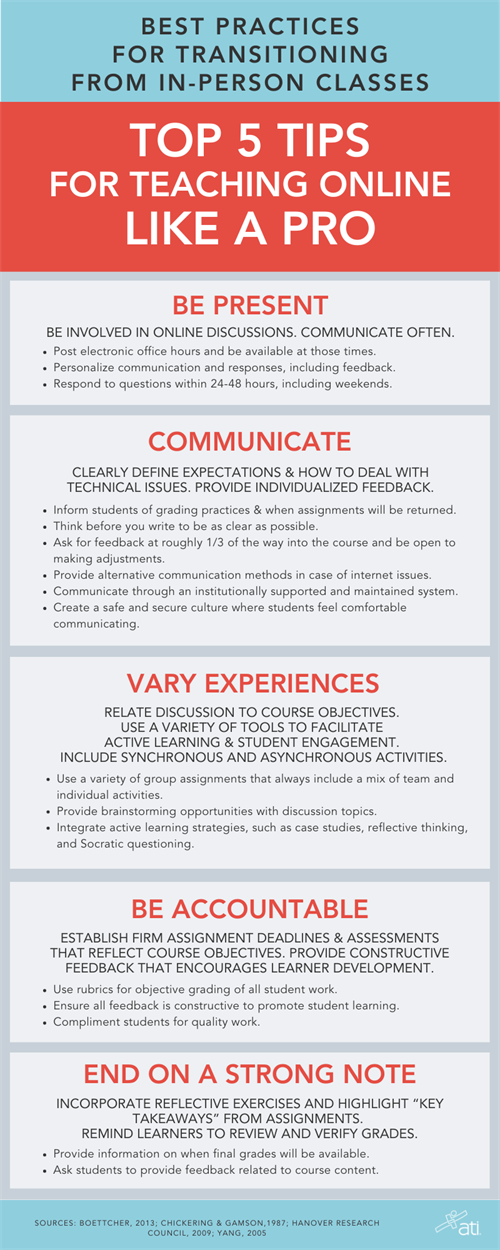Top 5 tips for teaching online like a pro

Last week, a group of ATI's nurse educators who specialize in teaching virtually gathered for an online discussion. Their goal: Develop resources to help nursing instructors prepare for and take on the challenges of switching from in-person classes to online-only classes.
ATI will be sharing their ideas and suggestions as soon as we are able to prepare them for you. To kick this set of resources off? A handy downloadable PDF that provides guidelines for putting your best food forward into the virtual world of education.
1. BE PRESENT.
It's easy to get overwhelmed with the rapidly changing situation being presented by the COVID-19 emergency. Your students, in particular, are scared. So make sure that you are there for them. Show them you are listening and ready to help by being fully involved in online discussions.
Some tips:
- Post electronic office hours and be available at those times.
- Personalize communications and responses, including feedback.
- Respond to questions within 24-48 hours, including weekends.
2. COMMUNICATE.
Communicating is obviously a big part of being present, but it happens both online and offline. Among the important messages you want to share are clearly defining your expectations. Explain how you plan to deal with the inevitable technical issues you'll all face. And provide individualized feedback whenever possible.
Additional tips:
- Inform students of grading practices and when assignments will be returned.
- Think before you write so that your thoughts are as clear and comprehensive as possible.
- Ask for feedback at roughly 1/3 of the way into the course and be open to making adjustments.
- Provide alternative communication methods in case of internet issues.
- Communicate through an institutionally supported and maintained system.
- Create a safe and secure culture where students feel comfortable communicating.
3. VARY EXPERIENCES.
Keep lessons interesting by using a variety of tools to facilitate active learning and student engagement. Use a variety of synchronous and asynchronous activities if possible. Of crucial importance is relating discussions to the course objectives so no one gets distracted.Additional ideas:
- Use a variety of group assignments that always include a mix of team and individual activities.
- Provide brainstorming opportunities with discussion topics.
- Integrate active-learning strategies, such as case studies, reflective thinking, and Socratic questioning.
4. BE ACCOUNTABLE.
Your students will expect you to be accountable, but remind them of their obligation to do the same. Additionally, establish firm deadlines for assignments and assessments that reflect those important course objectives. And don't forget to provide constructive feedback that encourages learner development.
Other suggestions:
- Use rubrics for objective grading of all student work.
- Ensure all feedback is constructive to promote student learning.
- Compliment students for quality work.
5. END ON A STRONG NOTE.
End each session with your students in a way that helps them retain as much of their learning as possible. Incorporate reflective exercises and highlight key takeaways from assignments. Remind them to review and verify grades.
Additionally, you should:
- Provide information on when final grades will be available.
- Ask students to provide feedback related to course content.
Resources:
Boettcher, 2013; Chickering & Gamson,1987; Hanover Research Council, 2009; Yang, 2005
